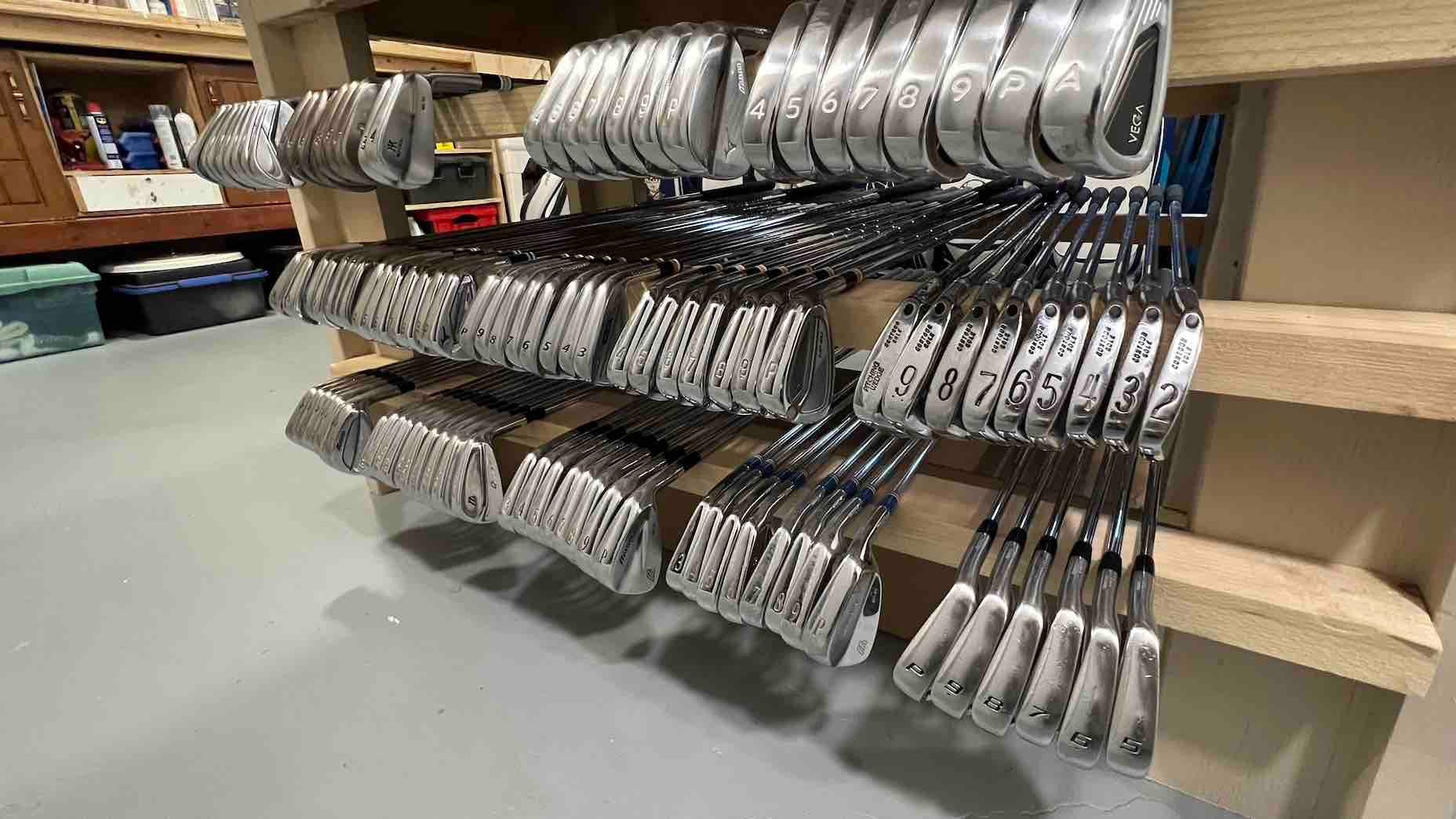Whether you’re looking to upgrade a driver you’ve had for a few seasons or just trying to find that first set of clubs to get you onto the course, buying used can save you a lot of money.
Just like with any purchase, it’s best to be as informed as possible so you can make a confident buying decision and we’re here to help. You don’t need to be an equipment expert to get your foot into the game, and we’ve put together a list of ways to help you get the best value when buying used gear.
The top 5 tips when buying used clubs.
Know your specs
If not stated online or when talking to someone in-person the key club specs you should ask about are:
– shaft flex
– length
– lie angle
Even this experienced club buyer has gotten over-excited about a deal before checking the specs and bought clubs 1” too short — true story, unfortunately.
If you are a beginner golfer, take the time to at least talk to a PGA professional or club fitting expert to help give you a baseline for what to look for — even if that means standard off-the-rack clubs. The closer your clubs are to the ideal fit, the more fun you are going to have on the course.
Check key components for issues
Taking just a couple of minutes to inspect a few key components of the clubs you are buying can tell you a lot.
Ferrules: The little plastic pieces that sit where the shaft meets the club head are strictly cosmetic but if a set has one or two that don’t match the others it’s a sign that those clubs have been repaired at some point. If this is the case ask for some extra clarification as to why.
Shafts: For steel-shafted clubs it’s pretty simple — if they’re bent say no thanks. For graphite shafted clubs check for any excessive paint wear or cracks around the area where the shaft goes into the head — this is one of the highest stress areas of the club, and cracks mean they have been damaged and could be ready to break soon.
Last but not least, when buying something like an iron set, make sure the shafts all match for brand and flex.
Grips
Grips are important enough to get their own section, especially when buying used. If grips are in acceptable condition or just need a good cleaning, even if they’re not your preferred model make sure they are at least your preferred size.
For any clubs over 5 years old, you should be prepared to regrip them so factor that into your budget. The great thing about new grips is they are a small investment to help your clubs feel like new and uniquely yours. If you need help selecting a grip be sure to check out our ultimate grip guide for tips on selecting the style, shape, and size that’s best for you.
Get adjustable when you can
If you’re not going to get custom fit, and we understand that when buying used it can be difficult depending on your budget, at least buy clubs that offer adjustability — drivers, fairway woods, and hybrids.
Modern adjustable woods offer one of the fastest and easiest ways to get you dialed into some extra distance and straighter shots. The best part is that every OEM offers an online guide on how to adjust their clubs so you don’t need an engineering degree to do it yourself — just a few moments and a torque wrench.
Buy from reputable sellers
This one is by far the most straightforward — if you want to avoid buying fake or counterfeit clubs, buy from trusted sources. Whether it’s online or a local retailer, reputable sellers always take the time to confirm the authenticity and can help remove the doubt from buying used.
Want to overhaul your bag for 2022? Find a fitting location near you at GOLF’s affiliate company True Spec Golf.
